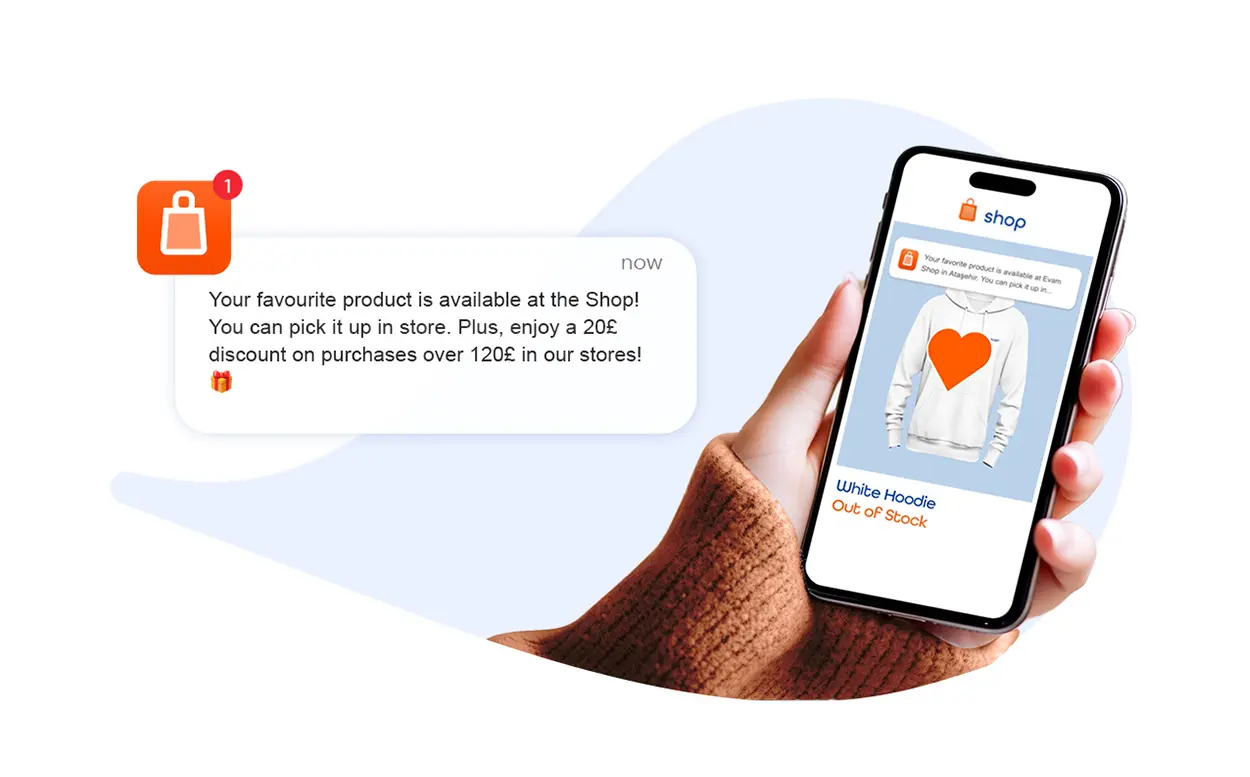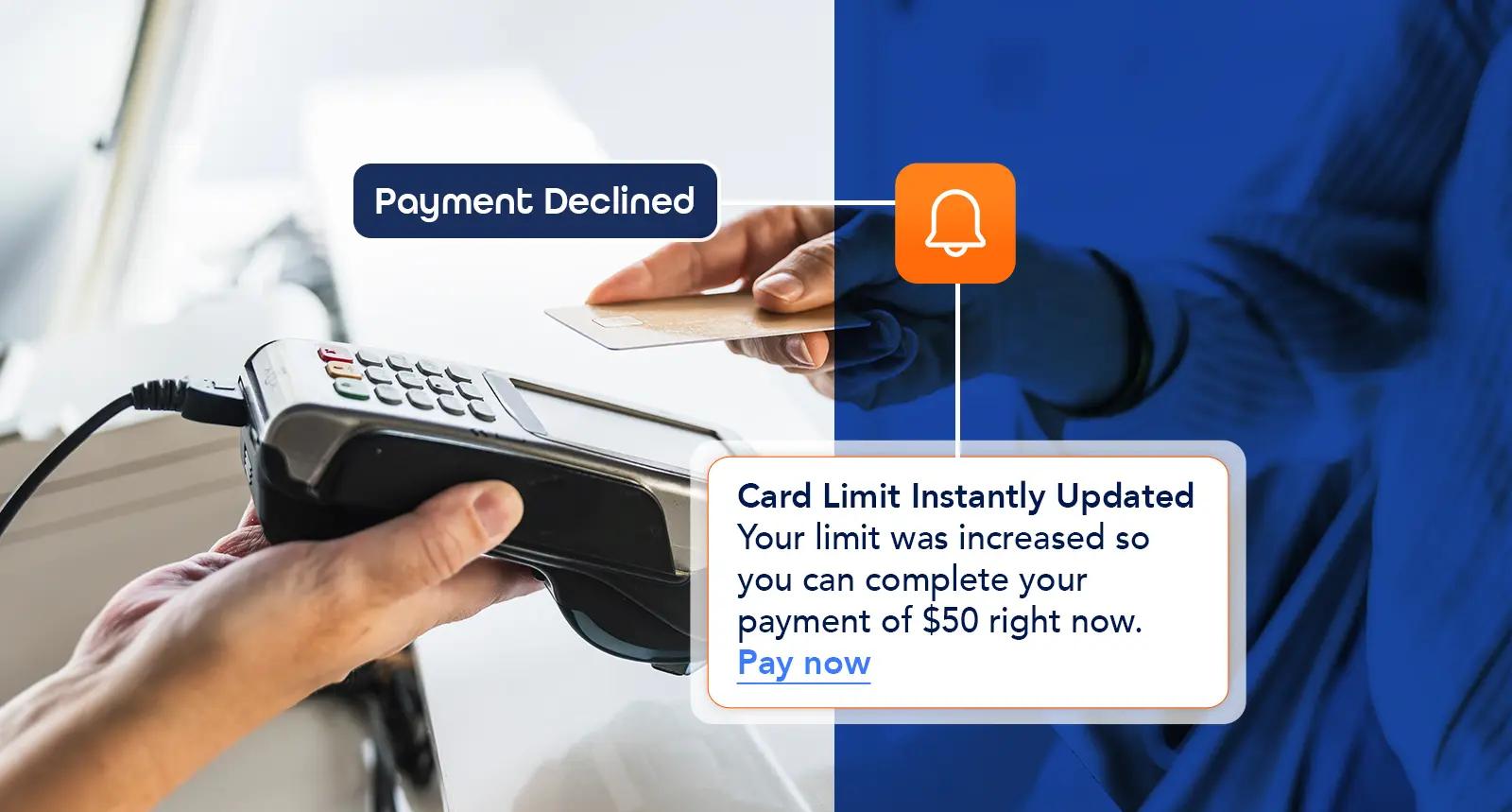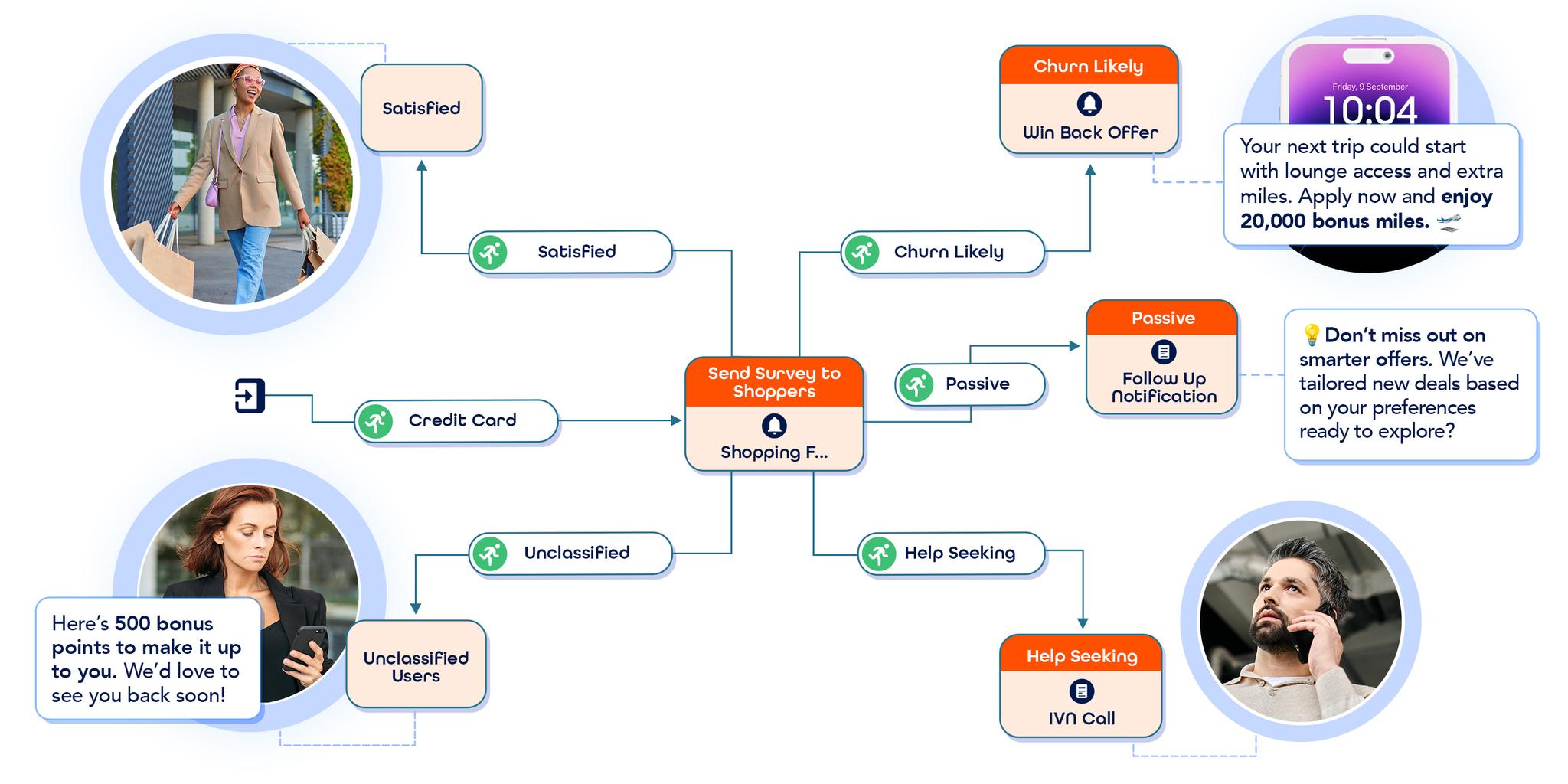- What Is Mobile App Personalization?
- What are the Benefits of Mobile App Personalization?
- What are Examples of Mobile App Personalization?
- The Challenges of Mobile App Personalization
- The Role of a Real-Time Marketing Platform in Mobile App Personalization
- evamX: Harnessing the Full Potential of Mobile App Personalization
In today’s app-saturated world, it’s easy for users to get lost in a sea of mobile applications. With a million apps available in the App Store and Google Play, simply having an app isn’t enough to capture a user’s attention - or keep it. To truly stand out and drive engagement, businesses need to provide user experiences that are meaningful and resonant for each customer. Mobile app personalization is the key to cutting through the noise.
Whether it’s through providing custom experiences, special offers, or relevant content, personalization ensures that a brand’s app isn’t just another icon on the home screen, but a channel that directly speaks to users’ needs.
What Is Mobile App Personalization?
Mobile app personalization refers to the practice of tailoring a mobile app's content, features, and customer experience based on a user's preferences, behaviors, and past activity. The goal is to create a more relevant, engaging, and unique experience for the user, making the app feel suited to their needs.
What are the Benefits of Mobile App Personalization?
Providing personalized app experiences to users benefits businesses in several ways:
1. Improved User Engagement
Personalized experiences make users feel valued and understood, which leads to increased interactions with the app. When users are shown content and features that align with their interests, they are more likely to stay engaged for longer periods of time.
2. Enhanced User Retention
When app users receive relevant content, recommendations, and offers based on their behavior, they are more likely to return to the app, fostering loyalty. By continuously adapting to their needs, businesses can build stronger connections, keeping users engaged over the long term and improving customer retention rates.
3. Data-Driven Decisions
By gathering data on how users interact with personalized content or features, businesses can gain valuable insights into customer preferences, pain points, and behaviors. This customer data can be used to further refine the app experience and marketing strategies, empowering businesses to make data-driven decisions.
4. Increased Customer Lifetime Value (LTV)
By delivering personalized experiences, businesses can keep users coming back and increase the frequency of transactions, therefore improving customer lifetime value. When users feel that a business is making an effort to cater to their specific needs, they’re more likely to develop loyalty.
5. Higher Conversion Rates
Mobile app personalization can significantly boost conversion rates by offering targeted upsell and cross-sell opportunities. By recommending related products or higher-value alternatives based on purchase history, businesses can encourage customers to increase their purchase size. Personalized offers can also nudge users toward completing abandoned purchases, driving both higher transaction values and more conversions.
What are Examples of Mobile App Personalization?
There are various marketing channels and strategies businesses could utilize to personalize mobile app experiences:
1. Geofencing
Geofencing allows businesses to send personalized messages or offers to users based on their real-time location. When users enter a predefined geographic area, such as near a store or event, the app can trigger relevant notifications, such as discounts, product recommendations, or event reminders.
Example: Rideshare apps can display personalized ride options based on a user’s current location.
2. Product Recommendations
Product recommendations in mobile apps enhance personalization by suggesting items based on a user’s past behavior, preferences, or purchase history. By offering relevant recommendations, apps make it easier for users to discover products they’re likely to enjoy or need, improving the shopping experience.
Example: An e-Commerce app can customize product suggestions on the homepage based on previous purchases, searches, and browsing behavior.
3. Personalized Push Notifications
Personalized push notifications are tailored messages sent to users based on their behavior, preferences, and past interactions with the app. By delivering relevant content, promotions, or reminders at the right time, businesses can increase user engagement and encourage actions such as completing purchases or revisiting the app.
Example: Language learning apps can send push notifications with reminders or challenges based on the user’s activity level or goals.
4. In-App Messages
In-app messages are personalized messages displayed to users while they are actively using the app. These messages can be tailored based on user behavior, preferences, or stage in the customer journey, offering relevant content, promotions, or guidance.
Example: An e-Commerce app could send in-app messages with special promotions or discounts to encourage users with an abandoned cart.
5. Customized Content
Customized content in mobile apps enhances user engagement by tailoring the experience to individual preferences. By analyzing user behavior, such as past interactions or interests, apps can offer highly relevant content that feels uniquely suited to each user.
Example: Music streaming platforms can create personalized playlists based on a user’s listening habits and interests.
As important and beneficial as these strategies are, implementing them could present some challenges for businesses.
The Challenges of Mobile App Personalization
There are four main challenges businesses often face when embracing mobile app personalization:
1. Data Privacy & Security
With increasing concerns about data privacy, especially with regulations like GDPR, businesses must ensure they are transparent about how they collect, store, and use personal data. Failing to do so can damage trust and lead to legal consequences.
2. Real-Time Data Processing
Personalizing the user experience in real-time can be difficult, especially when businesses need to process and analyze large amounts of data quickly. Delays in data processing can lead to missed opportunities for delivering timely and relevant content or offers.
3. Over-Personalization
There’s a fine line between delivering relevant and personalized content, and overwhelming users with too much information or a feeling of "being watched." Over-personalization is closely associated with the privacy paradox, and can lead to discomfort and a negative user experience.
4. Scalability
Scaling personalization efforts as the user base grows can be complex. Creating automated systems that deliver highly relevant and personalized experiences for a growing number of users requires significant technical resources.
These challenges may seem daunting for businesses to tackle alone, which is why leveraging the power of a real-time martech platform is a strategic decision to overcome them with ease.
The Role of a Real-Time Marketing Platform in Mobile App Personalization
A real-time martech platform can greatly enhance mobile app personalization by providing the tools and insights needed to deliver highly targeted and dynamic experiences.
1. Dynamic Segmentation
A real-time martech platform can segment users based on their behavior, demographics, preferences, and past interactions. This segmentation allows businesses to send highly targeted messages or recommendations that feel more relevant to each user segment.
2. Mobile Marketing Automation
With mobile marketing automation, a real-time martech platform can automatically send personalized emails, push notifications, or in-app messages based on specific user actions, preferences, or milestones.
3. Real-Time Engagement
Real-time martech platforms can track user behavior as it happens, allowing businesses to respond immediately with personalized content or offers.
4. Omnichannel Personalization
An omnichannel martech platform can integrate data from multiple touchpoints such as a mobile app, website, social media, and email to provide a consistent and personalized experience across all channels.
5. Compliance with Data Privacy Laws
A real-time martech platform ensures that user data is collected, stored, and used in accordance with data privacy regulations like GDPR. It provides businesses with the tools to obtain user consent for data collection, offer opt-in/opt-out options, and manage user preferences regarding data usage for personalization. Allowing these options aids significantly in overcoming challenges related to over-personalization.
6. Customer Journey Mapping
Businesses can map and track the customer journey across different stages, from discovery to purchase. By understanding where users are in their journey, businesses can deliver personalized content or offers that encourage progression to the next step.
7. A/B Testing and Optimization
A/B testing tools allow businesses to experiment with different versions of personalized content such as push notifications, app messaging, or product recommendations. This enables businesses to find the most effective strategies for personalization.
evamX: Harnessing the Full Potential of Mobile App Personalization
evamX is a real-time, omnichannel martech platform that empowers businesses to provide hyper-personalized user experiences through various marketing channels, including mobile apps.
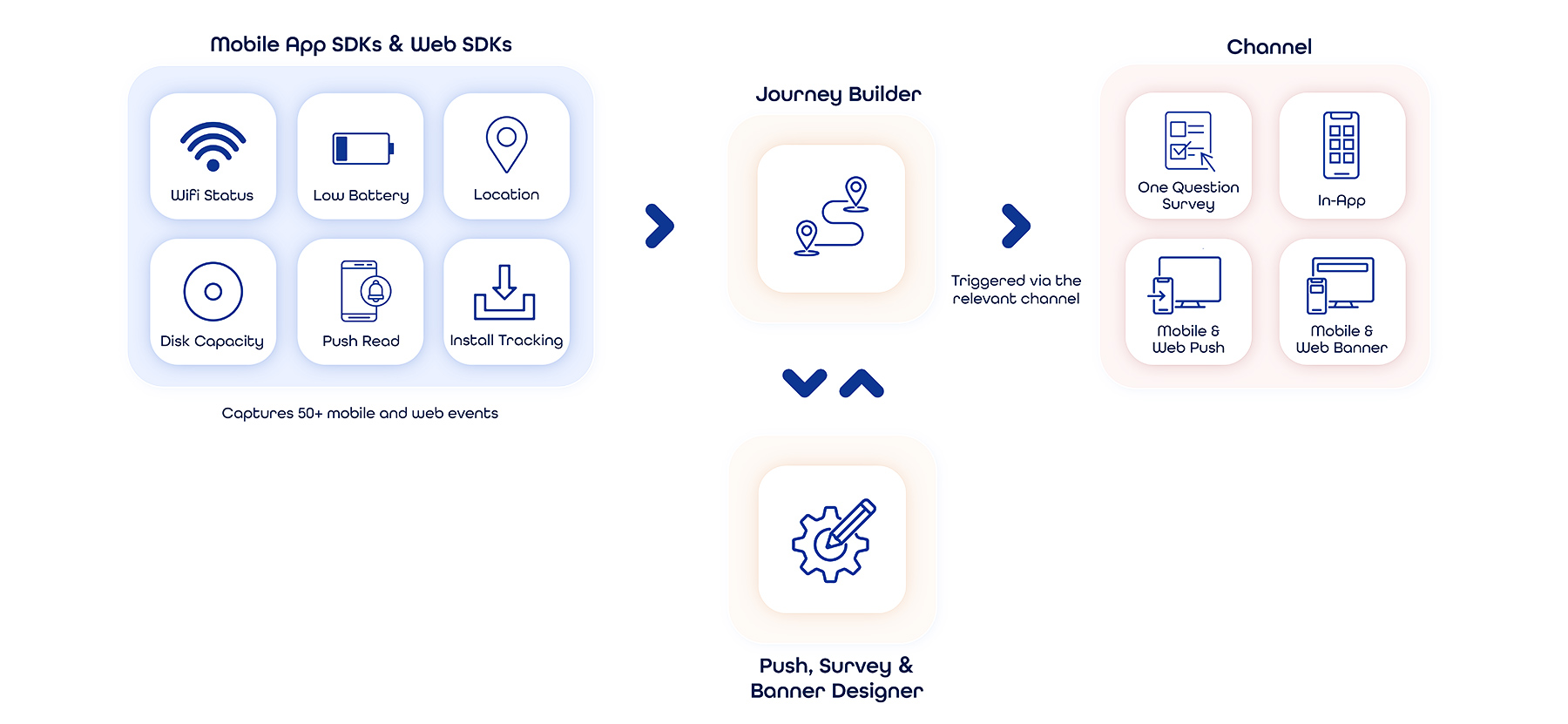
Through its innovative modules like Journey Designer, NBX Decisioning, and Digital Engagement, evamX gathers insight into customer preferences and behavior, performs contextual segmentation, maps out the customer journey, and provides personalized and real-time customer experiences, all the while complying with privacy laws and respecting users’ autonomy.
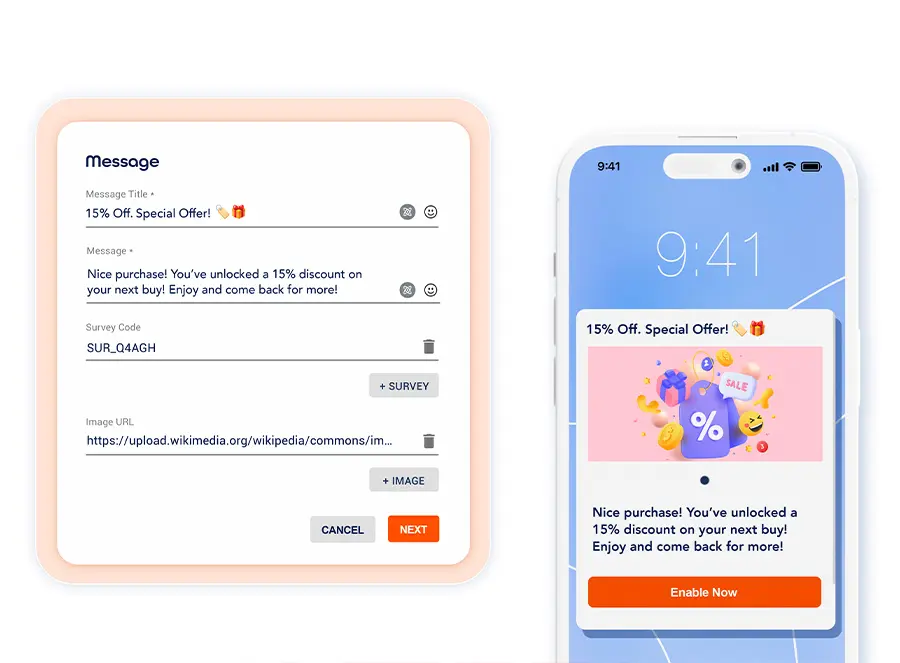
Are you ready to discover how evamX can help your business harness the benefits of mobile app personalization?



